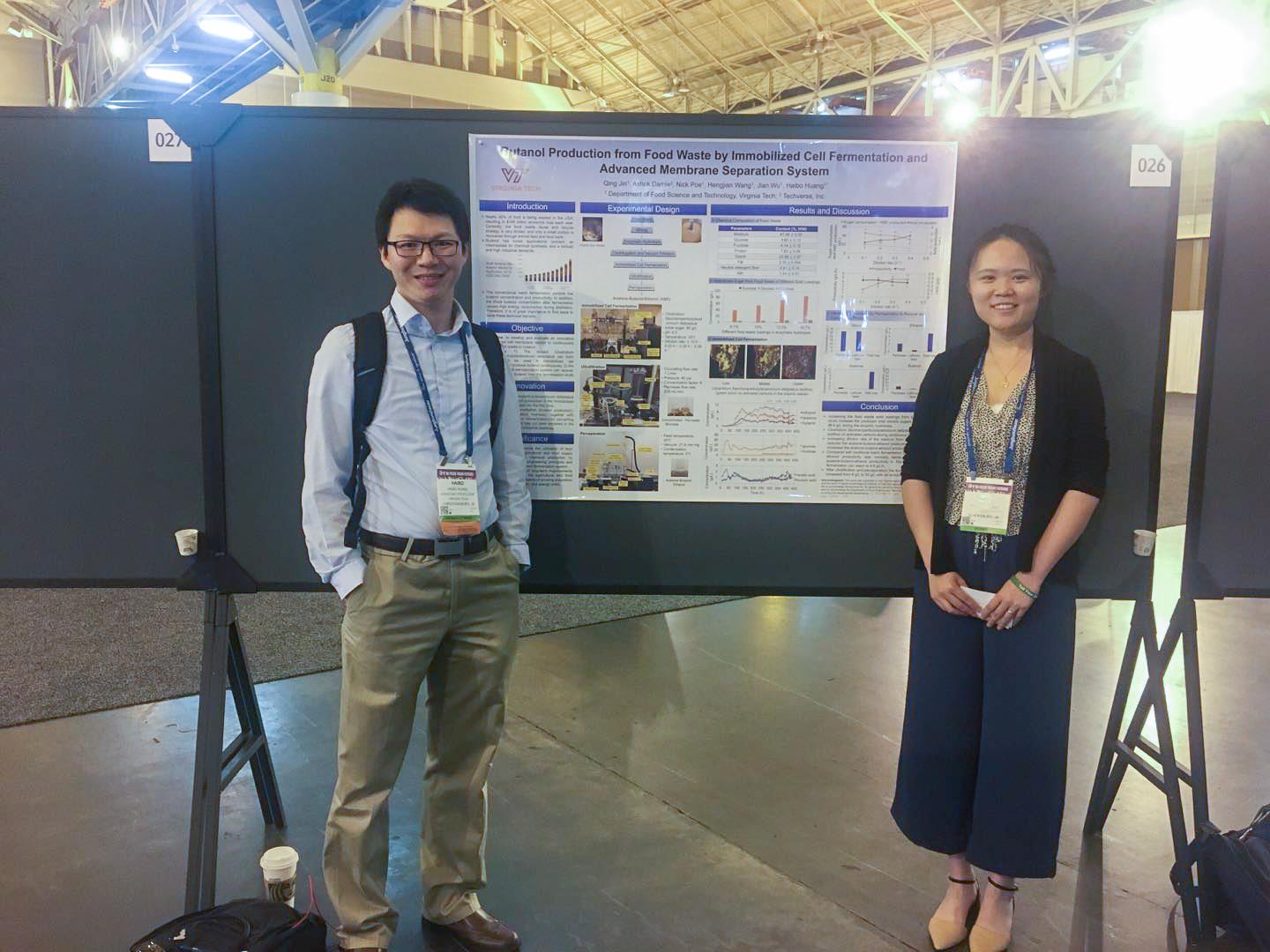Applying Food Waste to Produce Butanol by Immobilized Cell Fermentation and Membrane Filtration Systems

WaterINTERface IGEP Student Presenter: Qing Jin
Advisor: Dr. Haibo Huang
Conference: Institute of Food Technologists (IFT) 19 in New Orleans, LA, USA
By Qing Jin
I was happy to present my research project regarding butanol production from food waste by immobilized cell fermentation and membrane filtration systems to the public in the IFT19 conference in New Orleans.
Food waste is a big problem to the United States. Nearly 40% of food is being wasted in the United States, resulting in $165 billion economic loss each year. Efficient utilization of food waste for biochemical and biofuel production can benefit environment, energy, and economic sustainability. Butanol as a valuable commodity serving as both fuel and chemical precursors is worthy of generation. To solve the low butanol production in batch fermentation, we designed a novel immobilized cell fermentation connected to a membrane separation system to obtain higher butanol production rate and yield from food waste.
Food waste was first liquefied and saccharified to obtain soluble sugars. The soluble sugars were fed into both batch fermentation and a continuous 500-mL column reactor (filled with activated carbon for immobilizing Clostridium saccharoperbutylacetonicum deltptabuk) to produce butanol, respectively. The fermentation effluent with dilute butanol was then sent to the ultrafiltration and pervaporation membrane systems sequentially to remove bacterial cells followed by enrichment of butanol concentration.
Compared with batch fermentation, the immobilized cell fermentation system showed significantly (p < 0.05) higher butanol yield and productivity. After ultrafiltration and pervaporation, the butanol concentration increased from 8 g/L to 55 g/L with an enrichment factor of 6.9. This system has not been explored in current literature and industrial practices. The outcome from this study can benefit industrial production of butanol and support long-term improvements in the sustainability of agriculture and food systems.
This presentation has drawn a lot attention from the conference. People were curious about how the immobilized cell fermentation system and the membrane separation system were set up. In addition, they were curious about how to get sugars from food waste. I had a good discussion with the audience and answered their questions. Finally, I got a Golden Ticket from the conference for inviting us to submit our research for consideration to be published in an IFT scientific journal.


